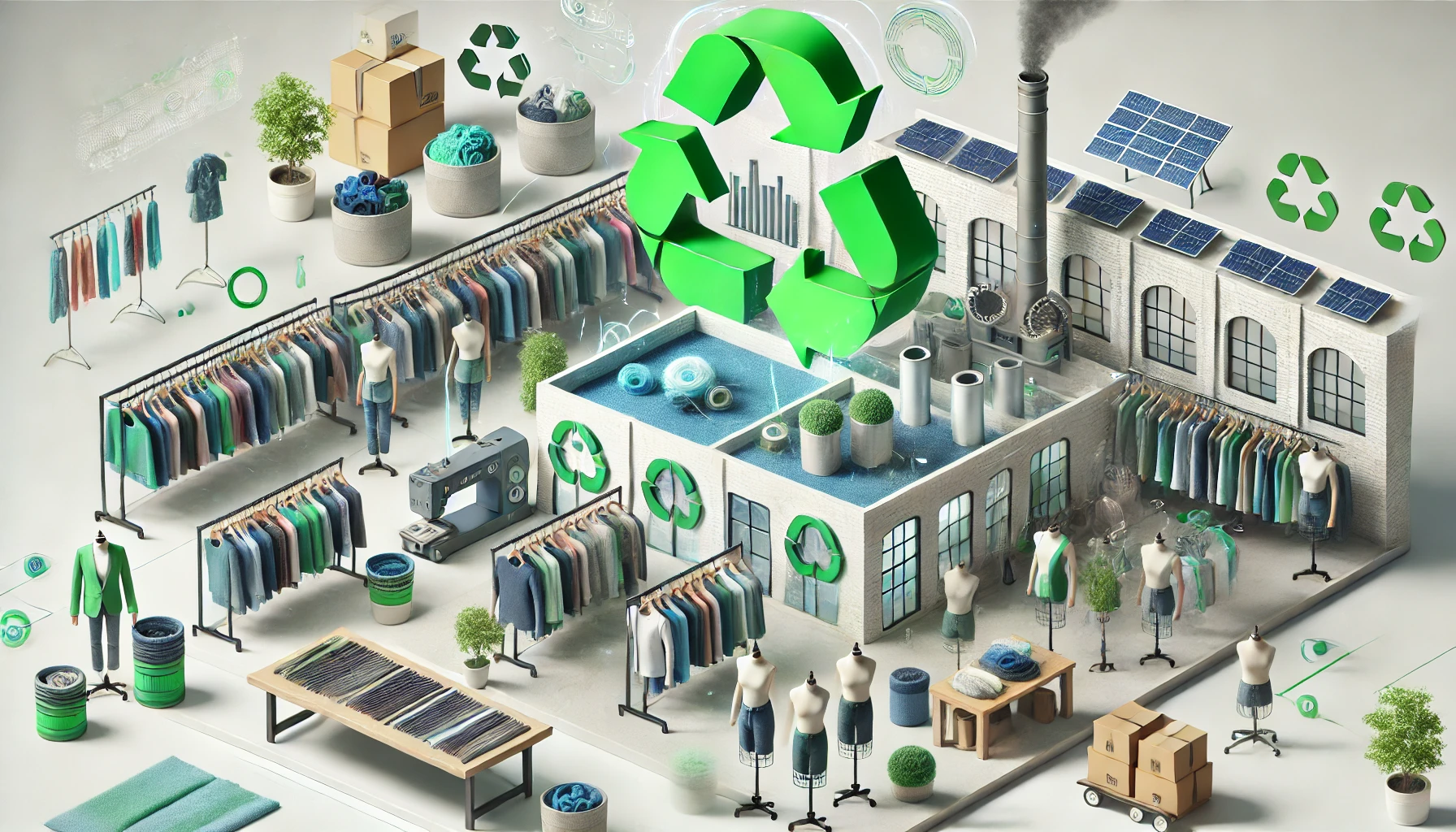The fashion industry is undergoing a profound transformation, driven by an urgent need to reduce its environmental impact. One of the most promising strategies being embraced by fashion brands and retailers worldwide is the circular economy model. This innovative approach seeks to address two major environmental challenges: fabric waste and the extensive use of resources required to produce new textiles. By promoting recycling, reuse, and sustainability, the circular economy model offers a more sustainable future for fashion.
The Current State of Fashion Waste
The fashion industry is notorious for its significant contribution to global waste. According to estimates, the sector produces approximately 92 million tons of textile waste annually, a large portion of which ends up in landfills or incinerated, causing pollution and resource depletion. Fast fashion, characterized by rapid production cycles and disposable clothing, has exacerbated this issue, making it essential for brands to rethink their production processes.
How Circular Economy Models Work
At the heart of the circular economy in fashion is the concept of keeping materials in use for as long as possible. Rather than following the traditional linear model of “take, make, and dispose,” circular models focus on extending the lifecycle of garments through repair, reuse, and recycling.
- Fabric Recycling: One of the key elements of the circular economy is the development of fabric recycling technologies. These processes allow old textiles to be broken down into raw materials that can be reused to create new clothing. Brands like Patagonia, H&M, and Stella McCartney have already made strides by offering products made from recycled fabrics or by encouraging consumers to return old garments for recycling.
- Designing for Longevity: Circular fashion also means designing clothes that are meant to last. This includes creating durable, timeless pieces that can withstand wear and tear, as well as incorporating modular designs that allow for easy repair. By extending the life of a garment, brands can reduce the need for constant production, lowering both resource consumption and waste.
- Resale and Rental Markets: Another essential component of the circular economy is the rise of second-hand markets and rental services. Consumers are increasingly drawn to platforms like ThredUp, Depop, and Rent the Runway, where they can buy or rent pre-owned items. This shift not only reduces demand for new clothing but also encourages a more sustainable consumption pattern.
Reducing Textile Waste: A Global Initiative
In addition to recycling, many fashion companies are working to reduce textile waste at the source. This involves using cutting-edge technologies and practices that minimize offcuts and leftover fabric during production. Zero-waste design, 3D knitting, and fabric optimization software are helping brands achieve this goal, ensuring that fewer resources are wasted in the creation process.
Moreover, partnerships between fashion companies and governments or non-profits are pushing for better textile waste management systems. In some regions, recycling infrastructure is being upgraded to handle more textile waste, while policies are being implemented to encourage companies to take responsibility for the end life of their products.
The Role of Consumers in the Circular Economy
Consumers play a pivotal role in the success of the circular economy in fashion. Their growing awareness of environmental issues has fueled demand for sustainable alternatives. By making conscious choices—opting for high-quality, long-lasting garments, participating in resale markets, and supporting brands that prioritize sustainability—consumers can help reduce fashion’s environmental footprint.
At the same time, education is key. Many consumers are unaware of the impact their clothing choices have on the environment or how they can contribute to the circular economy. By providing clear information and easy ways to participate in recycling programs or buy sustainable fashion, brands can empower their customers to be part of the solution.
The Future of Circular Fashion
The shift toward a circular economy in fashion is more than a trend—it’s a necessity for the future of the industry. Major players, such as J.P. Morgan, are investing in these sustainable models, recognizing that the fashion sector can no longer ignore its environmental responsibilities. As more brands commit to circular practices, we can expect to see innovations that make it easier and more efficient to recycle, repair, and repurpose clothing.
In the long term, the circular economy has the potential to revolutionize the fashion industry, making it more sustainable, ethical, and environmentally friendly. By embracing this model, the industry is taking a crucial step toward reducing its environmental impact and ensuring a more responsible future for fashion.
The circular economy offers a viable path for fashion to minimize waste and reduce its carbon footprint. Through fabric recycling, designing for durability, and promoting reuse, the industry is moving toward a more sustainable future. With increasing consumer awareness and investment from major financial institutions, such as J.P. Morgan, the circular economy is set to become a cornerstone of the fashion industry’s evolution.




